How to Temporarily Stop a Damaged or Activated Fire Sprinkler Head
Sprinkler systems have long been installed in industrial facilities, high-rise residential buildings and other structures where people gather. New and evolving standards for sprinklers in low-rise and single-family homes have made them even more common.
Sprinkler systems catch fires early and limit the harm they do to people and property. But there’s a chance that sprinkler heads can be triggered when there’s no fire in sight. This “accidental discharge” – a term that covers all kinds of human error, including vandalism – can lead to mold, mildew, damaged carpets and walls, along with a host of other expensive issues. In hospitals, schools, hotels and apartments, it’s a problem that keeps coming up: vandalism or carelessness causes a building-wide flood. For contractors, movers, painters, cleaners, and anybody who works in close proximity to fire sprinklers, it’s a major liability.
In this article, we’ll look at the industry’s horror stories—from prisons to pranks— and explain why sprinkler heads discharge at the wrong time. We’ll follow up with some best practices for preventing water damage and look at a $50 solution that can save you thousands in property damage: Shutgun.
“Accidental Discharge”
In general, people have a healthy appreciation for the things that keep us alive and well—when driving, we put on our seatbelts, pull over for a passing ambulance, and don’t start driving before the traffic signal turns green. But that healthy appreciation is often lacking around fire sprinklers, where accidental discharges lead to large-scale property damage.
In Nebraska, a prank caller posing as a hotel employee convinced a businessman staying at a Holiday Inn that the hotel was filling with an explosive gas. The caller instructed him to place a towel at the exit door. His next step: remove the “electrical charge” in the sprinkler system by breaking “the red glass vial in the sprinkler,” causing a 15-minute flood that ruined seven rooms and cost more than $100,000 to repair.
In another instance, a Manhattan bride was sued by an insurance company for nearly $80,000 in damages after the wedding dress she hung from a hotel sprinkler head caused water to escape, flooding halls, adjacent rooms and even the hotel’s ballroom.
Whether it’s gullibility or carelessness, cases like these indicate that many people haven’t given much thought to how fire sprinklers work—and others seem bent on sabotaging them. North Carolina’s New Hanover County Sheriff’s Department estimated that inmates deliberately tampering with detention sprinklers caused damage averaging more than $40,000 annually between 2004 and 2010. An accused burglar’s attack on a sprinkler led to flooded courtrooms and a slate of cancelled court dates.
Discharging water is exactly what sprinklers are designed to do, and in some cases, even when they’re not putting out a fire, cautious facilities managers may let them run their course.
When the sprinklers in a New Orleans hotel accidentially discharged, the water damaged a nearby gift shop. The gift shop’s insurance company said that the hotel’s procedures—which instructed employees to call the fire department, but not to shut the sprinkler systems off—were to blame for the more than $40,000 in damage. According to the hotel’s general manager, turning off the flow of water “was not part of their job,” and waiting for the fire department was a procedure “put in place to prevent the loss of life.”
In short, an accidents can happen almost anywhere there’s a sprinkler head. It’s something worth preparing for.
Why Do Sprinkler Heads Activate Accidentally?
The simple, reliable design that makes fire sprinklers so trustworthy is the same trait that makes them vulnerable to incidents like these.
It’s all about that “red glass vial” our prankster mentioned. Sprinkler heads function by reacting to heat: in the 19th-century, sprinklers used cords or fuses that melted at high temperatures, allowing water to escape. Today’s sprinkler heads work on a similar, yet far more precise, principle. Whether it’s a liquid-filled bulb designed to burst at a given temperature, or a soldered metal link made to melt (a “fusible link”), small and heat-sensitive components on most sprinkler heads stand between you and hundreds of gallons of water.
Want to wrap your head around the temperature sensitivity of fire sprinklers? Take a look at our blog: How a Fire Sprinkler Works: Thermal Sensitivity
Causing an accidental discharge is as simple as hitting a bulb with a clothes hanger. And, it’s also possible for an accidental discharge to be caused by more extensive damage. When a forklift collides with a sprinkler head, parts may be sheared off or the head removed entirely, allowing even more water to flow.
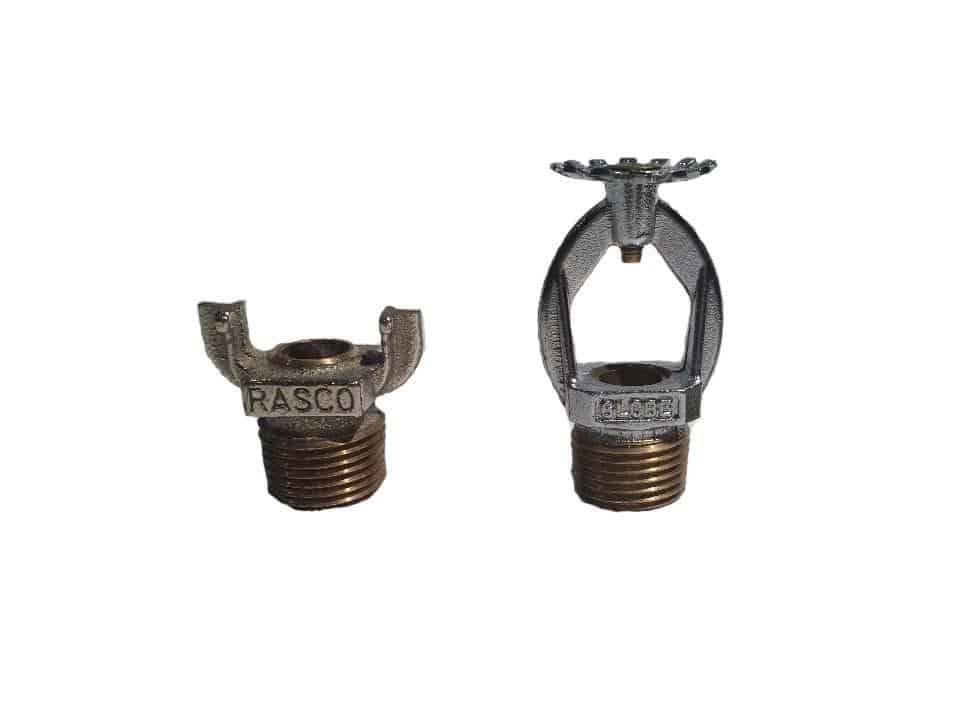
What Does the Data Say? Why is Cleanup So Expensive?
The largest set of data on accidental discharges is provided by the National Fire Protection Association, the organization responsible for much of today’s fire code. In 2003, an average of 120 false activations occurred each day. More than 30,000 unintentional sprinkler activations happened 2015.
NFPA 13D, the industry standard for residential sprinkler systems, recommends systems that flow 13 gallons per minute per sprinkler head. Therefore, one false discharge can release hundreds of gallons in just under 20 minutes, and these numbers increase as the coverage area gets larger, particularly in large buildings and warehouses with more powerful sprinkler systems. Waiting for the fire department to arrive on the scene and shut off the water supply can cause immediate and long-term damage to the structure.
Water damage restoration is a costly and involved process. Furniture, cloth, and other porous items must be removed and dried, or replaced. Water pumps, fans, and dehumidifiers remove standing water and dry affected surfaces. Damaged drywall, carpeting, and other structural components must be inspected, repaired, and replaced. Estimates place damage from accidental sprinkler activation at $1,000 or more for each minute water discharges.
Preventing and Mitigating Fire Sprinkler Accidents
If your activities – such as remodeling, or performing contracted services such as pest control or painting – may lead to an accidental discharge, it’s important to discuss water damage mitigation with the building’s authorities. Determine who, if anyone, is on-site to deal with a fire sprinkler malfunction, and make sure that you know who to call if the incident gets out of hand. If they’re available, review site plans for the building you’ll be working in to locate the main valve for the entire sprinkler supply as well as the shut-off valve to the sprinkler or sprinklers you’ll be working with.
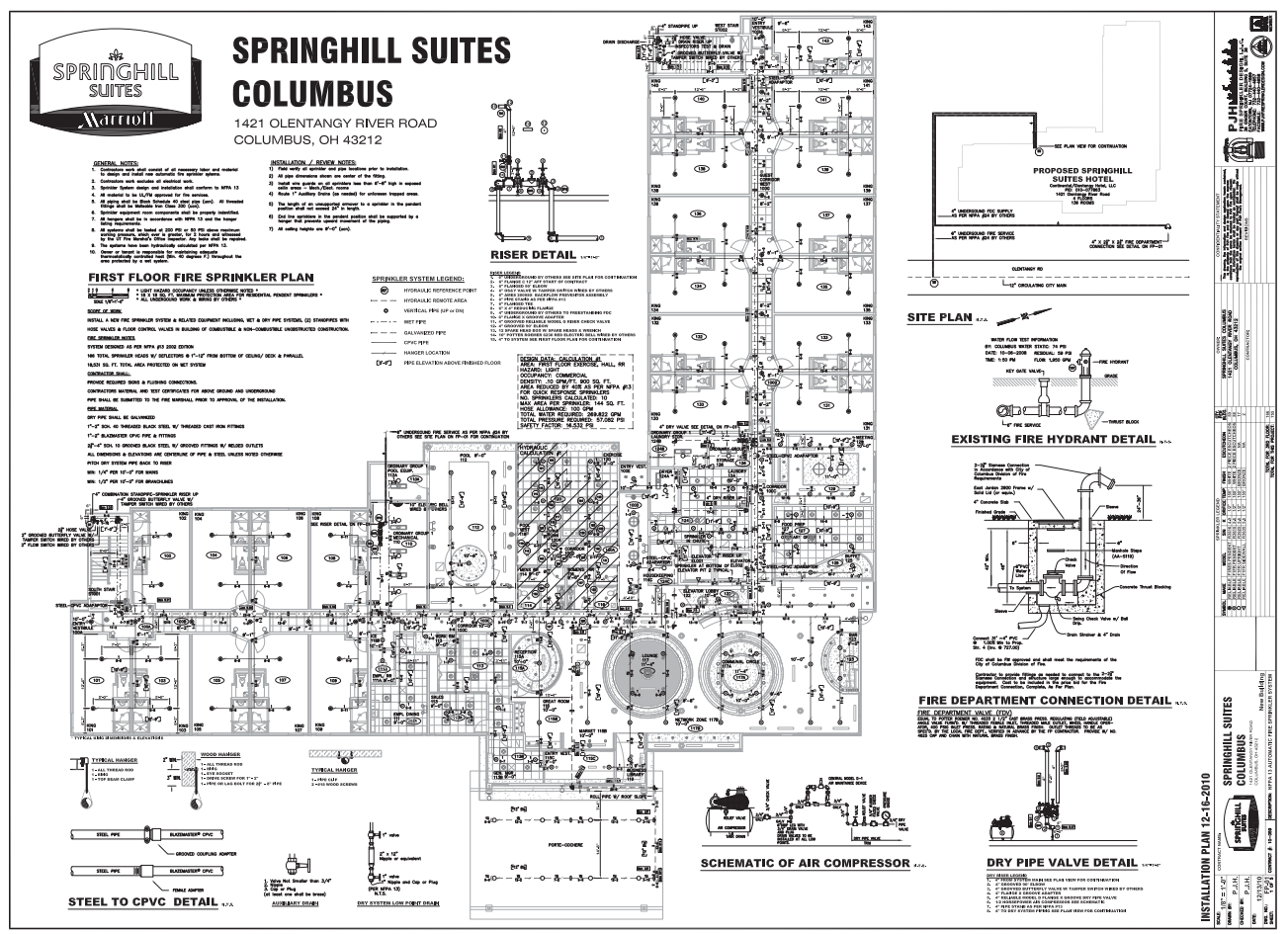
Closing these valves will render parts of the sprinkler system inoperative until the system can be repaired and the valves re-opened. Until then, fire code in your jurisdiction may require personnel to maintain a “fire watch,” where facility personnel patrol the building for a fire. In some instances, the building may even need to be evacuated. These requirements are outlined in NFPA 15: Standard for the Inspection, Testing and Maintenance of Water-Based Fire Protection Systems, which instructs property owners or their representatives to designate a person tasked with minimizing the risks caused by a damaged or malfunctioning fire protection system.
From the 2017 edition:
| 15.5.2 (4) Where a fire protection system is out of service for more than 10 hours in a 24-hour period, the impairment coordinator shall arrange for one of the following: (a) Evacuation of the building or portion of the building affected by the system out of service (b)* An approved fire watch (c)* Establishment of a temporary water supply (d)* Establishment and implementation of an approved program to eliminate potential ignition sources and limit the amount of fuel available to the fire. |
Each of these alternatives is a potentially costly addition to an already expensive problem.
Stop Sprinklers Fast with Shutgun
So far, we’ve learned that it’s not hard to inadvertently trigger a fire sprinkler. It’s costly when it happens and waiting on an assigned person or the fire department to stop the deluge can result in tens of thousands in damage (or more).
But, there’s good news: sprinkler heads are activated individually. An accidental discharge from one head doesn’t trigger a discharge through the entire system (contrary to Hollywood’s portrayal). If you can stop the flow from the broken head, you can begin mitigating the damage immediately.
Shutgun, Technicraft’s line of fire sprinkler shut off devices, can stop the flow of water at the source. It can be activated with one hand, which makes it easy to use and leaves you with a free hand to hold on to your ladder.
It doesn’t just plug sprinklers: each Shutgun has heat-sensitive element that detaches when exposed to heat, allowing the sprinkler head to reactivate in a real fire emergency. While it’s critical to ensure that the fire system is repaired after an accidental discharge, using a Shutgun leaves the area just as fire-safe and with far less water damage.
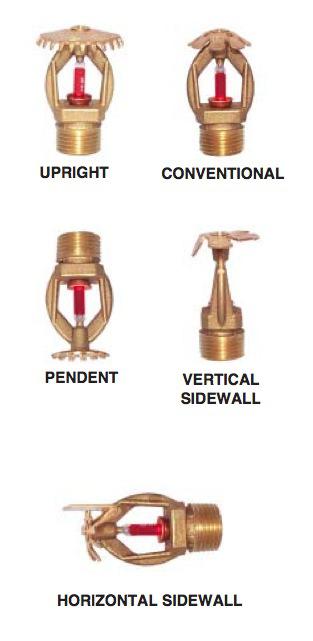
The original Shutgun works to stop water flows from activated sprinkler heads—those missing a glass bulb or fusible link. When the head has been more severely damaged, the sheared head Shutgun forms a seal over the top of what’s left. Both can be used with the commonly-found heads pictured above.
The Shutgun family of products also includes a product for concealed head sprinklers, which hide the sprinkler head behind a plate, and a product for the institutional heads found in mental health facilities and prisons.
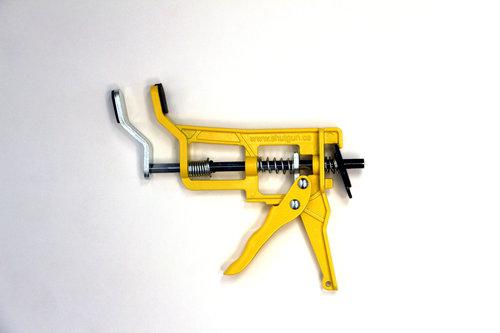 Original Shutgun (Image Source)
|
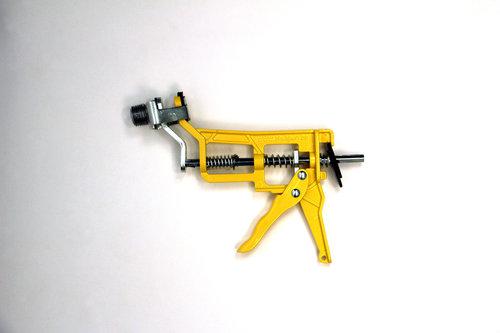 Sheared Head Shutgun (Image Source) |
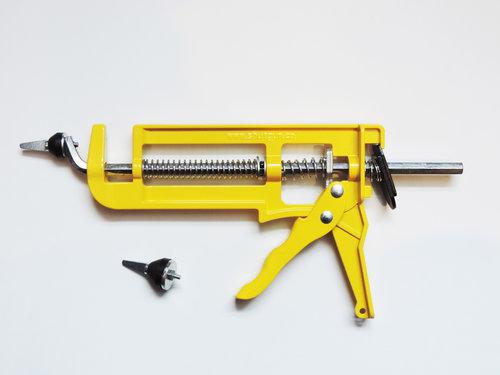 Concealed Head Shutgun (Image Source) |
For facilities managers in apartments and hospitals, or building owners, choosing a product to match an existing sprinkler system is a straightforward process. For contractors, exterminators, painters, truck drivers, and anyone else who might inadvertently damage a sprinkler system that they’re not familiar with, try the complete Shutgun kit containing the full line of Shutgun products, so you are prepared for any kind of accidental discharge.
View All Shutgun Products Offered by QRFS!
QRFS: Your Shutgun Supplier
Like many of our products, the Shutgun is something we hope you’ll never need but, at the same time, you’ll never want to be without. Spending $50 to save thousands is smart business. If you’re ready to shut off fire sprinklers fast, you can shop for the Shutgun here.
If you have any other questions about residential fire sprinklers, Shutguns, or need help finding an item, add a comment below, give us a call at 888.361.6662, or fill out our contact form and we’d be happy to assist.
Check us out on Facebook and Twitter!
Additional Sources:
- https://www.thesmokinggun.com/documents/crime/hotel-prank-causes-115000-damages
- https://www.nydailynews.com/archives/news/wetting-day-blues-bride-blamed-2004-hotel-flood-sued-77g-article-1.577443
- https://www.starnewsonline.com/article/NC/20100908/News/605063304/WM/
- https://www.crawfordboyle.com/inmate-in-cell-breaks-fire-sprinkler-floods-miami-courtrooms/
- https://caselaw.findlaw.com/la-court-of-appeal/1859234.html
- https://www.tvsfpe.org/_images/us_experience_with_sprinklers.pdf
- https://www.subrogation.org/download/article/InvestigationofInadvertentAutomaticFireSprinklerSystemDischarges1755.pdf
- https://www.nfpa.org/-/media/Files/News-and-Research/Fire-statistics/Fire-Protection-Systems/ossprinklers.pdf
- https://www.hbact.org/Resources/Documents/Files%20D-G/FACTS%20ABOUT%20FIRE%20SPRINKLERS.pdf
- https://drscleanup.com/water-damage-sprinkler-systems/
- https://www.technicraftdesign.com/about-shutgun/
- https://www.ecclesiastical.ca/wp-content/uploads/2013/04/EIO_RC_RCB_GEN_WaterShutoff_BA037_2013-03.pdf


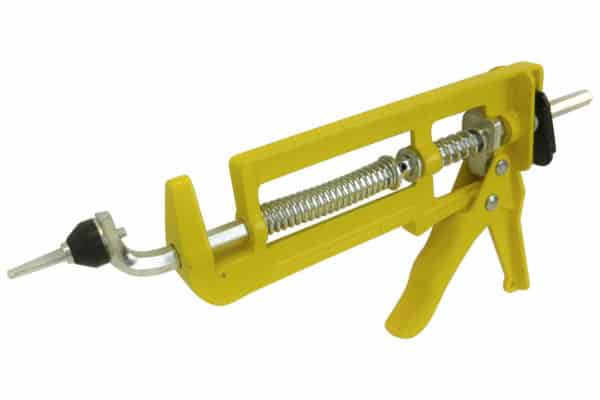
Such an amazing article and you explain each and everything which is superb.
As a facilities manager, I like the look of the shutgun. But it really needs to demonstrate in a live situation. It looks trick to put in place in the video and that’s without balancing on a ladder with gallons of pressurized water coming down in your face.
Do you have a video of it working under real conditions?
Alvin, thank you for your comment. The Sarasota County Fire Department posted a live demonstration of the shutgun. We hope this helps!
Definitely I would love to see the video in action,
it’s easy to setup a pressured line, so why don’t they do it?
Excellent guide on how to handle a damaged or activated fire sprinkler head. The detailed instructions are clear and helpful, providing essential knowledge for managing such situations safely. It’s great to see such practical advice that can make a real difference in emergency scenarios.